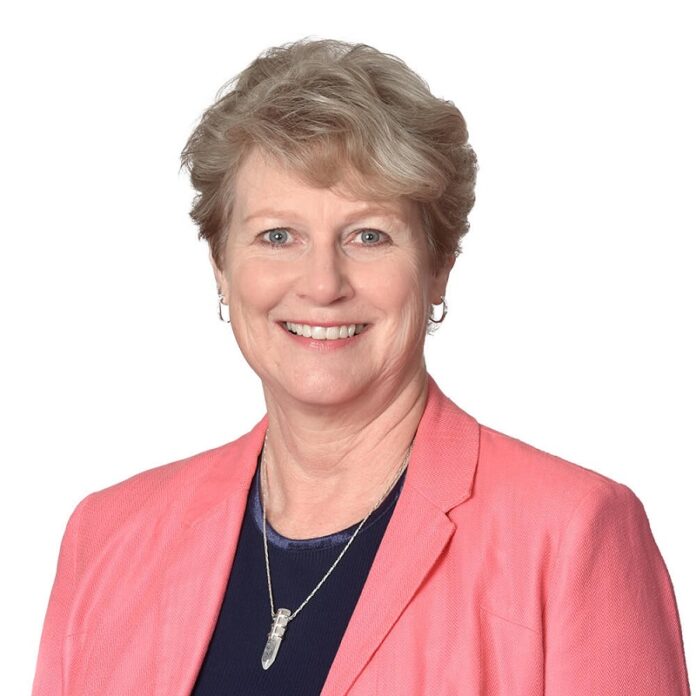B.C. is ramping up safety and supports for survivors of gender-based violence with a new three-year action plan released on Sunday, December 10.
“We have a great deal of work underway in B.C. to help address the systemic issue of gender-based violence,” said Katrine Conroy, Minister of Finance. “Today, we move forward with our next steps, in alignment with our partners and community service providers, in supporting survivors and making our communities safer.”
Safe and Supported: B.C.’s Gender-Based Violence Action Plan reports on vital work underway across government and actions that will be coming next year and beyond. The actions include boosting programming and supports for survivors, strengthening government’s response to the crisis of missing and murdered Indigenous women and girls, and ramping up prevention and awareness campaigns. Initiatives were developed in consultation and co-operation with Indigenous partners, and with advice from community service providers and advocates.
The federal government is committing $61.9 million in new investments over four years for the plan under a new Canada-British Columbia bilateral agreement to end gender-based violence announced December 8. This funding will help reduce critical wait lists, build capacity for community-based services, and address gaps for underserved communities. More than half of new funding will be invested in Indigenous-led initiatives to be announced in the coming months.
“We are working together to end isolation, stigma and apathy when it comes to gender-based violence, and make sure survivors can access the care and supports they need,” said Kelli Paddon, Parliamentary Secretary for Gender Equity. “With this action plan, we are lifting up Indigenous-led approaches, breaking cycles of violence and working with communities to strengthen safety and supports for survivors.”
The new funding will contribute to transformational investments already underway in B.C., including: $1.2 billion over 10 years to create safe spaces and housing for women and children leaving violence; expanded cell service to make travel safer; 75 new sexual assault programs, including five sexual assault centres; new 24/7 crisis lines; new policing standards; and stronger victim supports and other programming supported by more than $60 million from the Province each year for gender-based violence supports and services.
“This action plan builds on new victim-centred and trauma-informed policing standards we’ve put in place to support survivors and respond to gender-based violence,” said Mike Farnworth, Minister of Public Safety and Solicitor General. “Everyone deserves fair and empathetic treatment after they have experienced devastating trauma, supports that are critical while we work towards a world where every woman, girl and gender-diverse person is able to live free from violence.”
The plan recognizes that gender-based violence is highly pervasive. Indigenous women and girls, and other racialized people, newcomers and 2SLGBTQIA+ people are especially affected by violence, as well as those living in poverty, in rural and remote communities, and those living with disabilities.
In particular, addressing the national crisis of missing and murdered Indigenous women, girls and Two-Spirit people requires commitment and action from all levels of government. The Safe and Supported plan moves critical work forward in response to the Final Report of the National Inquiry into Missing and Murdered Indigenous Women and Girls and the 231 calls for justice.
The action plan has been informed by perspectives and recommendations from Indigenous leaders, community members, service providers, advocates, and survivors and their families. To continue to support collaboration in addressing gender-based violence, B.C. is expanding the mandate of the Gender-Based Violence Action Plan Advisory Committee, which was established in 2022 to provide guidance and feedback. The advisory committee, comprised of Indigenous partners, community service providers and advocates, will work with government to learn and monitor progress throughout the life of the plan.
Based on the advice of Indigenous partners and the advisory committee, B.C. will continue to strengthen initiatives and identify further actions in the future years of this three-year plan. To best meet the needs of survivors and service providers, Safe and Supported will be updated on an ongoing basis. A key foundation of the plan is continuous learning to monitor progress.
The Province also works collaboratively with the federal government and responds to priorities that support Canada’s recently released National Action Plan to End Gender-Based Violence.
Learn More:
To read the Gender-Based Violence Action Plan, visit: https://news.gov.bc.ca/files/
BACKGROUNDERS
Actions underway and planned to address gender-based violence in B.C.:
* doubled the number of Women’s Transition Housing Fund safe spaces to 3,000, with nearly 1,000 new spaces complete or underway;
* introduced provincial policing standards to better support survivors during sexual assault investigations;
* restored stable funding for 70 sexual assault programs, 22 of which are specifically for Indigenous survivors;
* providing wraparound, compassionate, community-based care for sexual assault survivors with five new sexual assault centres in Vancouver, Victoria, Kamloops, Prince George and Surrey;
* boosting funding to help service providers reduce waitlists and respond to pressures unique to their programs, enabling more access to services;
* creating a 24/7 crisis line provided by Salal Sexual Violence Support Centre to give immediate support and referrals for people experiencing gender-based violence;
* introduced B.C.’s new Intimate Images Protection Act to provide a faster way for people to get exploitative images offline quickly and seek monetary damages;
* modernizing the Family Law Act;
* increased flexibility and support for survivors with changes to the Crime Victim Assistance Program;
* increasing cell service in rural and Indigenous communities and along high-risk transportation corridors;
* introduced paid leave for people experiencing domestic and sexual violence through updates to the Employment Standards Act;
* introducing free virtual counselling for survivors of intimate-partner violence and sexual assault, tailored for underserved communities;
* keeping the locations of survivors and shelters confidential through co-ordination across government and with ICBC;
* supporting survivors with new training, including brain injury awareness, to help shelter and supportive housing staff identify and respond to gender-based violence;
* providing additional funding for specialized community teams that support survivors of domestic violence, sexual exploitation and human trafficking;
* improved access to appropriate, culturally safe and trauma-informed sexual assault forensic examinations in hospital emergency departments;
* providing access to legal services for survivors facing financial barriers through Legal Aid BC, in addition to eight provincially supported legal clinics, administered by the Law Foundation, which offer up to three hours of free legal advice for all survivors;
* supporting the Bad Date and Aggressor Reporting Project to create a system for sex workers to anonymously share reports about bad dates across B.C.
Actions underway and planned to break cycles of violence through prevention, healing and accountability:
* to prevent sexualized violence at post-secondary institutions, continue annual consent campaigns and launch a new initiative to help end sexualized violence at these institutions;
* promoting bodily autonomy and safety for students through consent-based training for educators with updated Student Health Guides in the K-12 school system;
* educating young children about bodily autonomy through Let’s Talk About Touching, an inclusive child sexual abuse prevention program for children between three and eight;
* investing in the Violence is Preventable Program, which brings Prevention, Education, Advocacy, Counselling and Empowerment Program counsellors to schools to deliver presentations about intimate partner violence and helps connect K-12 students experiencing violence to these counsellors;
* helping men who commit abuse by expanding Caring Dads, a community-based program that helps men take responsibility for their abusive behaviour and understand the impact it has on their children and partners;
* introducing new online resources for vulnerable youth transitioning out of government care to ensure they have access to information about gender-based violence, consent, healthy relationships and other important topics to help stay safe while building independence;
* supporting children and youth who have experienced abuse with increased funding for the Sexual Abuse Intervention Program;
* developing new conditions for gender and cultural safety on and around work camps, led by the Environmental Assessment Office;
* continuing to combat hate and violence so that communities can be safer and more inclusive for transgender and gender-diverse people; and
* improving civilian oversight for gender-based violence and harassment in policing.














